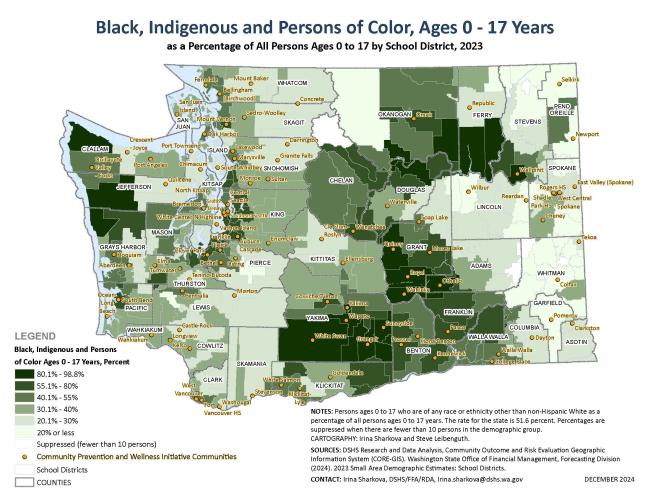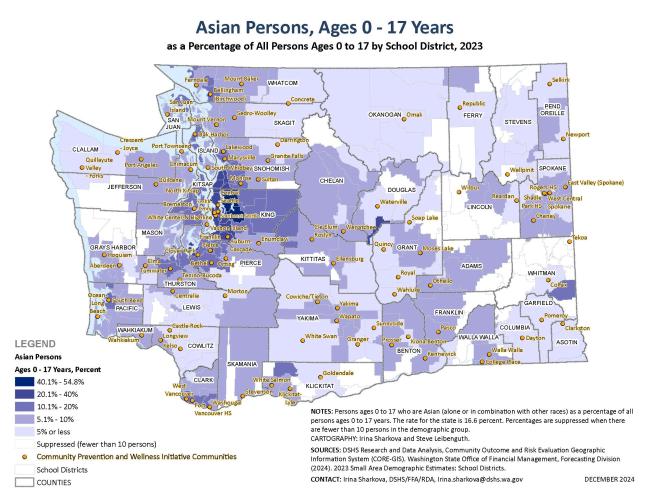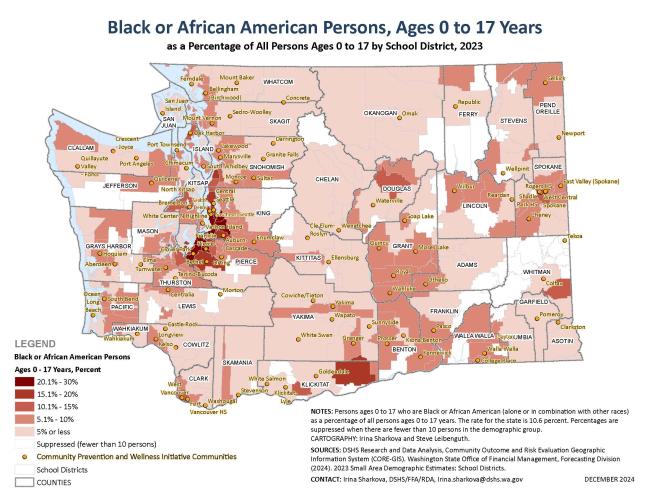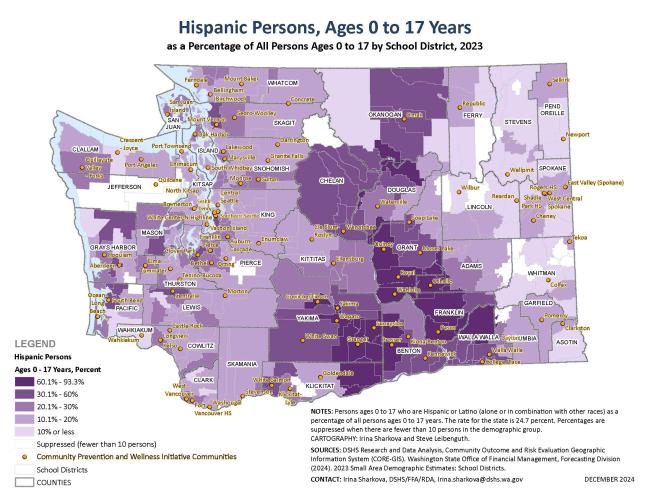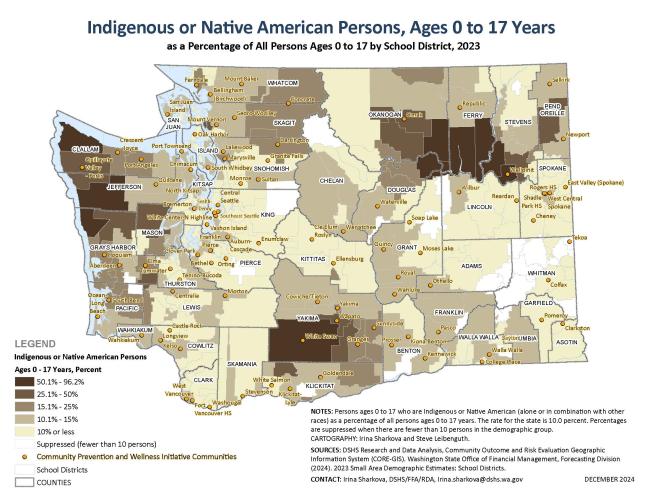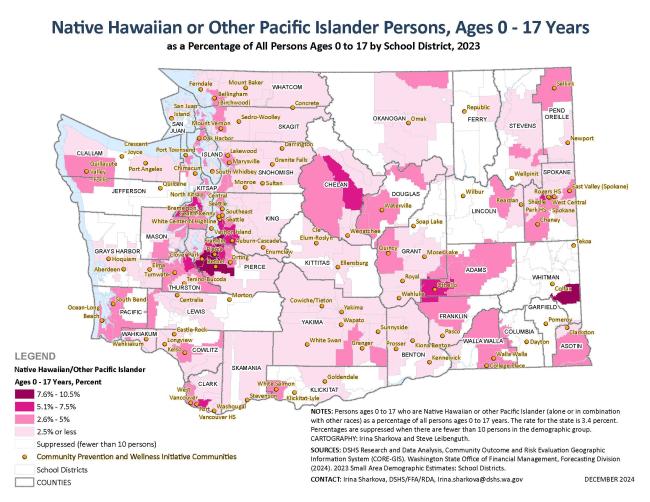In 2011, the Division of Behavioral Health and Recovery launched the Community Prevention and Wellness Initiative (CPWI) to provide substance use disorder prevention services and strategies through local coalitions and schools in communities with higher need. Community coalitions and schools working together have proven to be an effective organizing force for bringing evidence-based policies and programs to scale, improving public health. The CPWI Outcomes Summary provides state-level program impact information.
Through partnerships with counties and school districts across Washington, the Office of Superintendent of Public Instruction, and Educational Service Districts, CPWI is implemented statewide in:
- Nearly 100 communities
- All 39 counties
- All 9 Educational Service Districts
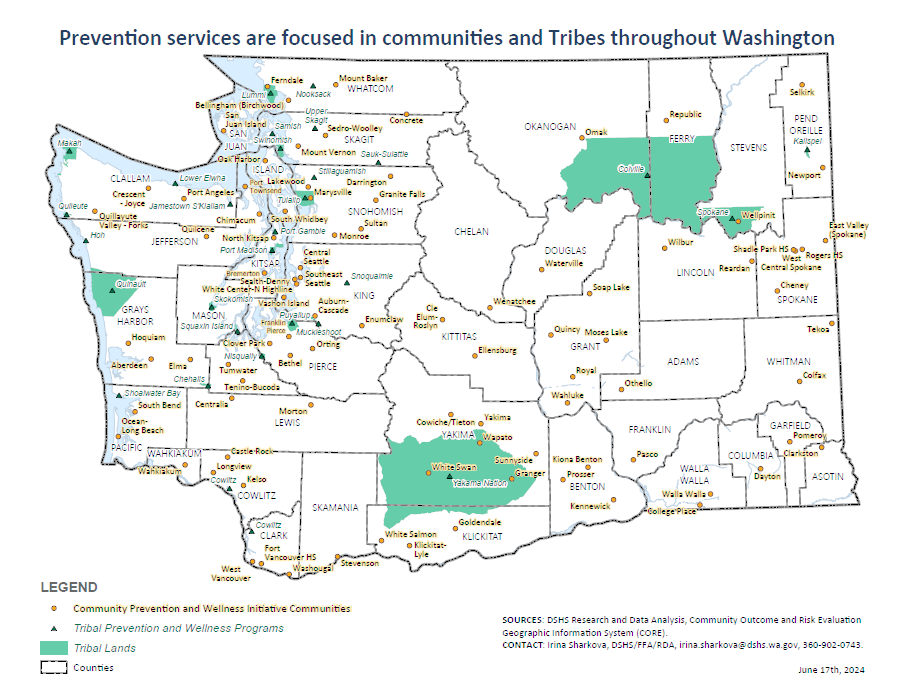
Click "View PDF" to view CPWI locations in relation to black, indigenous, and persons of color (BIPOC), black or African American, indigenous or Native American, Asian, Hispanic, and Native Hawaiian or other Pacific Islander (NHOPI) youth populations:
CPWI is a community coalition and school-based model for delivering prevention programs and strategies to reduce underage misuse of alcohol, marijuana, opioids, tobacco, and other drugs and substance use disorder. This model uses a data-informed, community-level decision making process to determine root social and emotional causes that predict problem behaviors.
CPWI focuses on:
- Building healthy and safe community environments
- Expanding quality preventive services in community and school settings
- Empowering people to make healthy choices
- Eliminating health disparities
The CPWI model allows us to better allocate and leverage limited public resources, increasing our ability to gain the best possible outcomes for communities. This more collaborative approach is expected to provide the long-term support needed for positive community change.
What is prevention?
Substance use prevention is evidence-based actions taken to delay the initial use of alcohol, tobacco, and other drugs, and to prevent substance misuse in order to promote health behaviors.
The Substance Abuse and Mental Health Administration's Strategic Prevention Framework, which integrates sustainability and cultural competency into its five cyclical phases – assessment, capacity, planning, implementation, and evaluation – guides prevention efforts within the CPWI model.
CPWI community and school-based prevention service providers implement a variety of information dissemination, education, alternative activities, problem identification and referral, community-based processes, and environmental strategies, taking a comprehensive approach to reduce substance use in their communities. Program and strategy selection is based on local need as demonstrated by state and local data, including the Healthy Youth Survey. Selected programs and strategies aim to decrease risk factors or increase protective factors, while taking local conditions into consideration.
View the "What is substance use prevention?" fact sheet, or visit our Introduction to Prevention webpage, to learn more about substance use disorder prevention, including frameworks and strategies.
How do we know prevention works?
Over 70 prevention programs and policies have been shown through rigorous research to prevent substance use problems, with nearly 30 shown to promote mental health and/or prevent suicide.
An evaluation by Washington State University shows that CPWI is meeting its goals: 95% of programs implemented between July 2015 and June 2016 had positive results in delaying the first use of alcohol or other drugs, reducing use, decreasing risk factors and/or increasing protective factors. Between 2011 and 2016, communities in Cohort 1 showed improvements in all family and community risk factors. Evaluation results also showed significant decreases in 10th grade substance use outcomes:
- Alcohol use and binge drinking - down 42%
- Cigarette use - down 49%
- Marijuana use - down 11%
Join our newsletter
Interested in staying up to date on CPWI? Join the Athena prevention newsletter to receive notifications and updates. Click to subscribe.
- Who can I contact for more information?
-
Kasey Kates
CPWI and School-Based Services Supervisor
Kasey.Kates@hca.wa.gov


